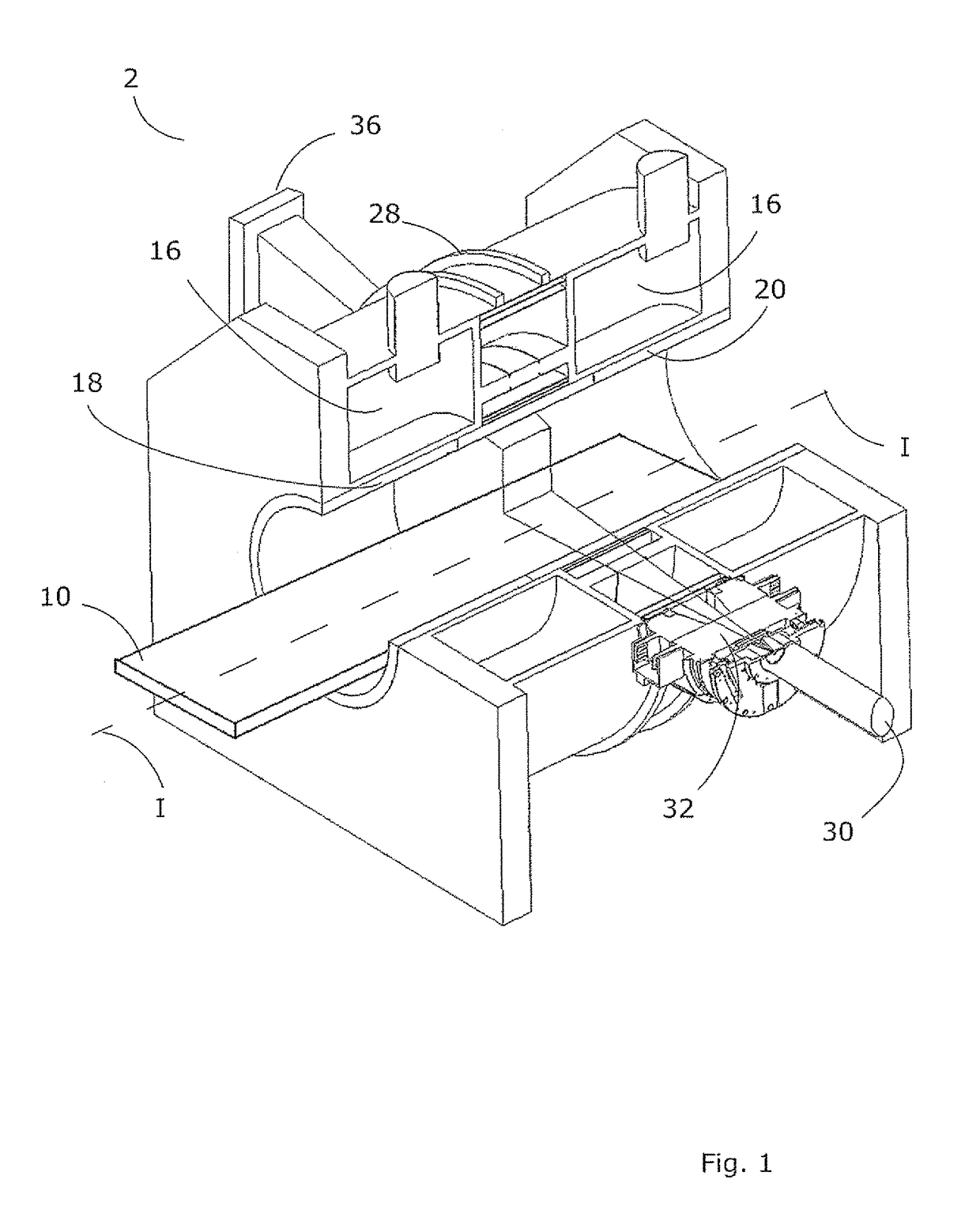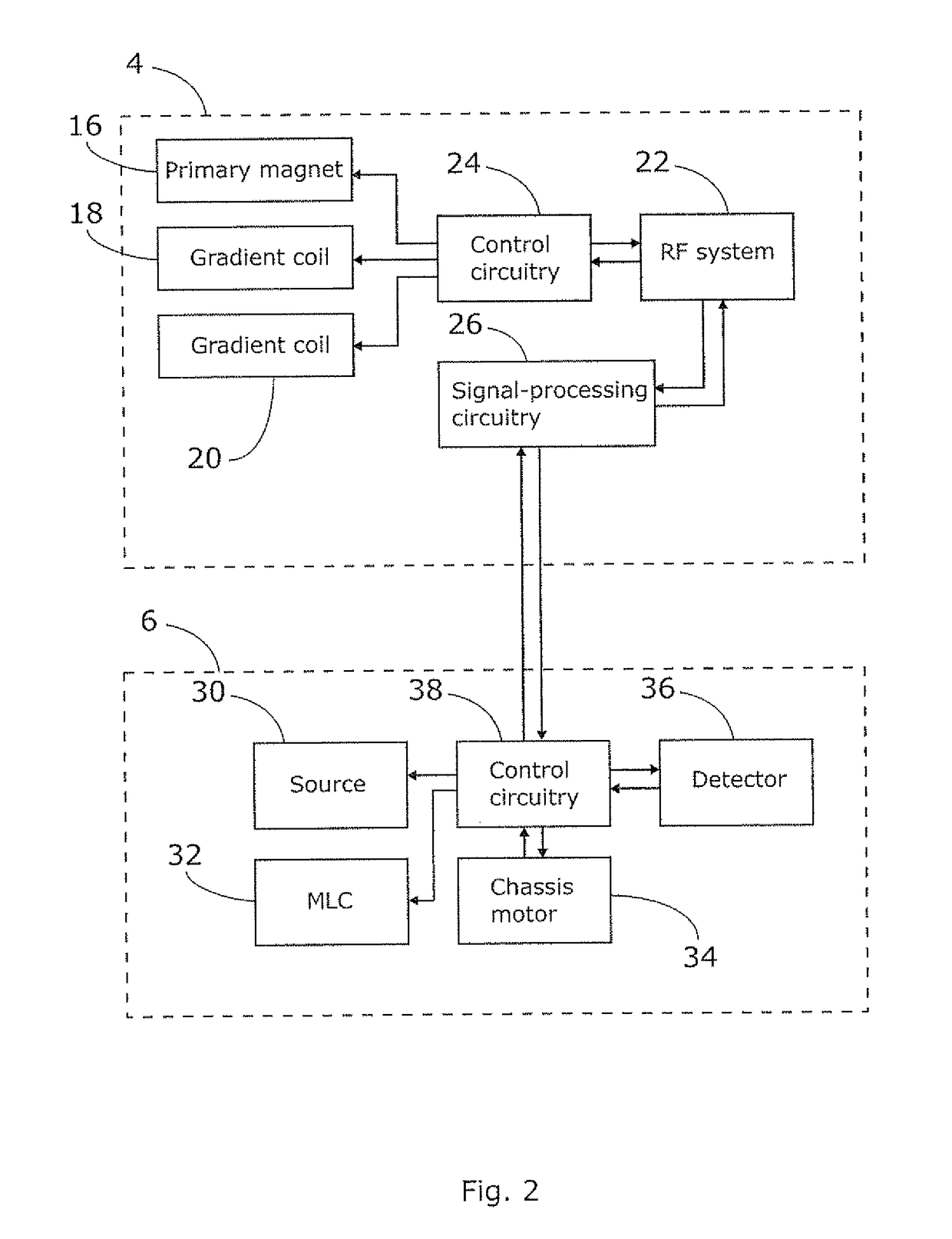Radiotherapy and imaging apparatus
a radiation therapy and imaging apparatus technology, applied in the field of radiation therapy and imaging apparatus, can solve the problems of inconvenient use, incompatible with the limited dose rate of an mri linac, and inconvenient use of binary collimators, and achieve excellent collimation
- Summary
- Abstract
- Description
- Claims
- Application Information
AI Technical Summary
Benefits of technology
Problems solved by technology
Method used
Image
Examples
Embodiment Construction
[0029]FIG. 1 shows a system according to embodiments of the present invention, comprising a radiotherapy apparatus and a magnetic resonance imaging (MRI) apparatus. The radiotherapy apparatus 6 and MRI apparatus 4 are shown schematically in FIG. 2.
[0030]The system includes a couch 10, for supporting a patient in the apparatus. The couch 10 is movable along a horizontal, translation axis (labelled “I”), such that a patient resting on the couch is moved into the radiotherapy and MRI apparatus. In one embodiment, the couch 10 is rotatable around a central vertical axis of rotation, transverse to the translation axis, although this is not illustrated. The couch 10 may form a cantilever section that projects away from a support structure (not illustrated). In one embodiment, the couch 10 is moved along the translation axis relative to the support structure in order to form the cantilever section, i.e. the cantilever section increases in length as the couch is moved and the lift remains s...
PUM
 Login to View More
Login to View More Abstract
Description
Claims
Application Information
 Login to View More
Login to View More - R&D
- Intellectual Property
- Life Sciences
- Materials
- Tech Scout
- Unparalleled Data Quality
- Higher Quality Content
- 60% Fewer Hallucinations
Browse by: Latest US Patents, China's latest patents, Technical Efficacy Thesaurus, Application Domain, Technology Topic, Popular Technical Reports.
© 2025 PatSnap. All rights reserved.Legal|Privacy policy|Modern Slavery Act Transparency Statement|Sitemap|About US| Contact US: help@patsnap.com



